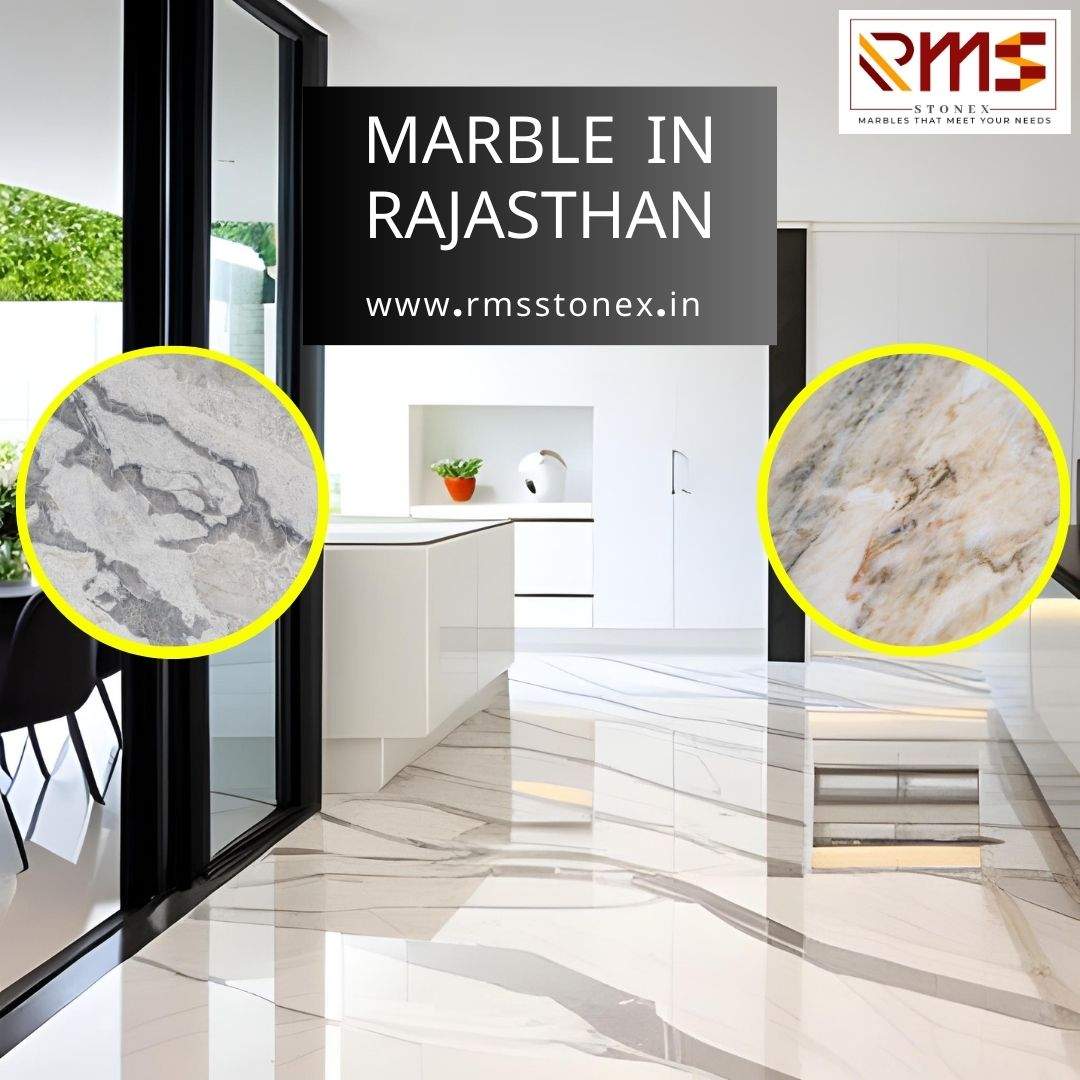Exploring the Unique Marble in Rajasthan – A Guide to India’s Finest Marble Craftsmanship
Marble in Rajasthan is famous for its rich cultural heritage and exquisite handicrafts, and the state’s marble handicrafts are no exception. Rajasthan’s marble industry is known for producing some of the finest quality marble in the world, which is used to create stunning sculptures, intricate carvings, and delicate inlay work.
If you’re planning a visit to Rajasthan, here’s a guide to help you explore the unique marbles of the region and discover India’s finest marble craftsmanship.
Overview of the Unique Marble Craftsmanship of Rajasthan
In Rajasthan, The Craftsmanship of Rajasthan Now discusses the unique natural stones.
RMS Stonex is the Imported marble in India, we provide the best quality Italian marble varieties.
A Deeper Look at the Different Varieties are Found Marble in Rajasthan
Rajasthan, the largest state in India, is renowned for its rich cultural heritage and exquisite craftsmanship. The region is also famous for its marble deposits, which have been utilized for centuries in various forms of art, architecture, and handicrafts. Let’s take a deeper look at some of the different varieties of marble found in Rajasthan.
1. Makrana Marble: It is perhaps the most famous variety of marble from Rajasthan. It gained international recognition through the architectural masterpiece, the Taj Mahal. Makrana marble is known for its pure white colour and high translucency, which gives it a unique charm. It is primarily quarried in the town of Makrana marble Rajasthan.
2. Ambaji Marble: Ambaji marble, also known as Ambaji White or Dungri marble, is a popular variety found in the Ambaji region of the Banaskantha district in Rajasthan. It is characterized by its milky white colour with subtle grey or beige veins. Ambaji marble is widely used in flooring, countertops, and sculptures.
3. Rajnagar Marble: Rajnagar marble, also called Rajnagar White or Abu Black, is primarily quarried in the Rajnagar area of the Rajsamand district in Rajasthan. It is a high-quality marble with a white base and intricate black or grey veins running through it. Rajnagar marble is extensively used in flooring, wall cladding, and decorative items.
4. Rajsamand Marble: Rajsamand marble, as the name suggests, is predominantly found in the Rajsamand district of Rajasthan. It is known for its fine texture, consistent patterns, and a range of colours, including white, pink, green, and black. Rajsamand marble is widely used in construction, sculptures, and handicrafts.
5. Udaipur Green Marble: Udaipur Green Marble, also known as Verde Udaipur or Rajasthan Green, is a unique variety found near Udaipur in Rajasthan. It is characterized by its beautiful green colour with subtle white or grey veins. Udaipur Green Marble is widely used in flooring, countertops, and decorative items.
6. Banswara Marble: Banswara marble, named after the Banswara district of Rajasthan, is known for its elegant appearance and durability. It comes in various shades of white and grey, often with purple or pink veins. Banswara marble is commonly used in flooring, wall cladding, and sculptures.
7. Pink Marble: Pink marble, also referred to as Pink Onyx or Rosy Pink, is a captivating variety found in various regions of Rajasthan. It exhibits a range of pink shades, from soft pastel hues to vibrant pinks, with intricate patterns and veining. Pink marble is often used for decorative purposes, such as inlays, tabletops, and wall cladding.
These are just a few examples of the different marble varieties found in Rajasthan. The state’s marble industry is extensive, and each variety possesses its unique qualities and characteristics, making Rajasthan a treasure trove for marble enthusiasts and artisans alike.
The Process & Techniques Used for Crafting Marbles From Rajasthan
Crafting marble from Rajasthan involves a meticulous process that combines traditional techniques with modern tools. Here are the general steps involved in the craftsmanship of marble in Rajasthan:
1. Quarrying: The process begins with the extraction of marble from quarries. Skilled labourers use various tools, including chisels, wedges, and explosives, to break the marble blocks free from the bedrock. Quarrying requires precision to ensure the integrity of the marble blocks.
2. Block Cutting: Once the marble blocks are extracted, they are transported to cutting yards. Here, large diamond-tipped saws or wire saws are used to cut the blocks into slabs of desired thickness. The slabs are then categorized based on their quality, color, and patterns.
3. Slab Resin Treatment: In some cases, especially with softer or more porous marbles, the slabs may undergo resin treatment. This involves applying a resinous substance to the surface of the marble to fill any natural cracks or voids, enhance the strength, and improve the overall appearance.
4. Designing and Shaping: After the slabs are prepared, skilled artisans or designers create intricate designs or patterns on the marble surfaces. This can be done using hand tools, such as chisels and hammers, or modern tools like CNC machines that employ computer-guided cutting and carving techniques.
5. Polishing: Polishing is a crucial step that gives the marble its characteristic smooth and glossy finish. Initially, coarse abrasive pads or grinding stones are used to remove any imperfections or roughness from the surface. The process then progresses to finer abrasives until a high level of shine is achieved. Polishing can be done manually or using automated polishing machines.
6. Finishing and Edge Profiling: Once the marble is polished, the edges are profiled or shaped according to the desired design. This can include bevelled edges, rounded edges, or intricate patterns. The edges are carefully worked upon using various grinding and polishing tools.
7. Quality Checking: After the marble products are crafted, they undergo a stringent quality check. Skilled inspectors examine the marble for any defects, irregularities, or inconsistencies. Only the pieces that meet high standards of quality are approved for further processing or sent for packaging and shipping.
8. Packaging and Shipping: The final step involves carefully packaging the finished marble products to protect them during transportation. The marbles are packed in crates or containers to ensure their safe delivery to customers, both domestically and internationally.
Throughout the process, craftsmen in Rajasthan apply their expertise and artistic skills to bring out the inherent beauty of the marble. The combination of traditional craftsmanship and modern tools results in exquisite marble products that showcase the rich heritage and artistry of the region.
Conclusion:
Exploring the unique Marble Company in India, Rajasthan is a fascinating experience that will leave you in awe of the region’s rich cultural heritage and exquisite craftsmanship. Make sure to visit the marble quarries, factories, and handicraft markets, admire the marble monuments, and learn the art of marble inlay work to truly appreciate the beauty and intricacy of Rajasthan’s marble handicrafts.
Contact us – (+91916666037) RMS Marbles



No responses yet